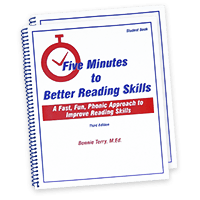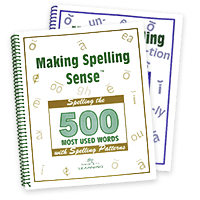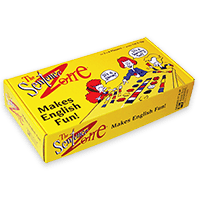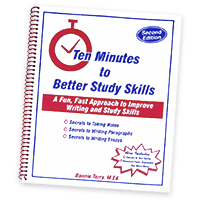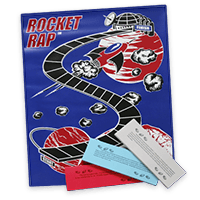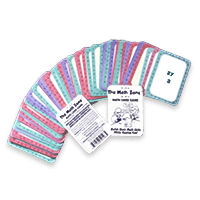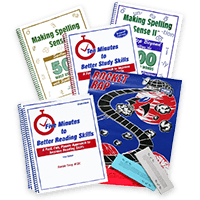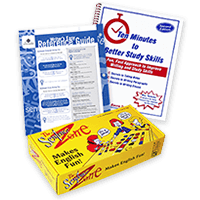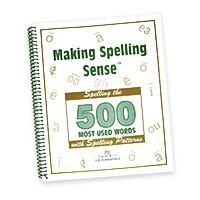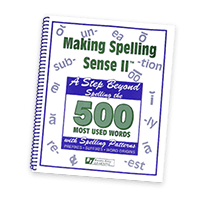Blog

10 Fun Educational Games for the Holidays
December 12th, 2019 2019-12-13T10:40:01-08:00 2019-12-12T09:05:55-08:003 things parents should be looking for when they are picking out educational fun games for their kids to keep them engaged?
Think about which skills you would like to enhance…reading? language? vocabulary? math? spelling?
Can you play the game over a number of years…will this be a game your kids will enjoy over the long term?

Auditory Processing Activities for Kids
December 4th, 2019 2019-12-05T11:10:01-08:00 2019-12-04T00:43:31-08:00Auditory processing is critical to learning whether it is learning to speak, read, write, follow directions,and math. We know that kids with reading problems usually have weak auditory processing skills. If a child has problems with auditory processing, it is often because of a weakness in phonemic awareness.

What is Reading Fluency? How to Become a Fluent Reader in 5 Minutes a Day
November 22nd, 2019 2020-04-23T18:18:36-07:00 2019-11-22T22:41:25-08:00Reading fluency is the speed and accuracy of reading without conscious attention to the mechanics of reading. In other words, a fluent reader has the ability to retrieve and read words automatically. Efficient readers are fluent readers. Multiple studies show that slow single word reading leads to both poor comprehension and frustration.

Spelling and Auditory Processing
October 14th, 2019 2020-04-29T07:55:17-07:00 2019-10-14T00:38:57-07:00Auditory processing skills are foundational skills for both reading and spelling. Phonemic awareness and phonics are the first steps in learning to read as well as spell. Both phonemic awareness and phonics depend on the auditory system. Phonemic awareness is the ability to hear, identify, and manipulate the individual sounds – phonemes – in spoken words. Phonics is the ability to accurately relate an auditory sound with a visual symbol. This is exactly what we do when we spell.

What is Phonics? A Key to Reading Intervention: Best Practices
April 3rd, 2019 2019-09-30T14:32:34-07:00 2019-04-03T22:48:33-07:00Phonics is different that phonemic awareness. We often think of phonics skills and how we may need to improve them without actually understanding what phonics skills are and how they differ from phonemic awareness.
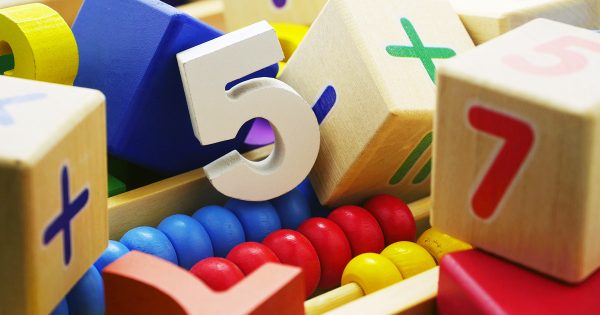
What is Number Sense? The Key to Improve Math Skills
March 20th, 2019 2020-12-17T16:37:27-08:00 2019-03-20T00:13:51-07:00Number Sense is your sense of what numbers mean. What value does a number represent? Which number is bigger or smaller? Making comparisons is also part of number sense. Learn what number sense is and activities you can do to improve this sense.

Brain-Based Learning: Auditory Processing Activities
March 12th, 2019 2019-03-13T18:41:05-07:00 2019-03-12T10:02:33-07:00Three brain-based auditory processing disorder activities for kids of all ages. These activities improve learning skills while you have fun. Auditory processing is one of the three avenues we learn academic skills from. Remember, we learn by hearing (auditory processing), seeing (visual processing), and doing (tactile/kinesthetic processing). That being said, APD – an auditory processing disorder was found to be present in 43.3% of those that struggle with learning (2009 The National Center for Biotechnology Information). Read on to learn the behaviors that indicate your child may have difficulties with auditory processing.

ADHD Sleep Problems and Learning
March 5th, 2019 2020-03-10T10:20:01-07:00 2019-03-05T12:05:33-08:00Whether you have inattentive type ADHD, hyperactive type ADHD, or the combination type ADHD, sleep problems often impact you. In fact, studies show that 50% of those with ADHD have signs of sleep deprivation at least a few nights a week.

5 Spelling Practice Activities Improve Visual Processing
February 5th, 2019 2019-09-24T21:35:15-07:00 2019-02-05T08:00:14-08:00Spelling Practice Is Impacted by Visual Processing Areas. Many students have difficulty with weekly spelling practice because they don’t remember well. The visual memory associated with visual processing impacts your ability to spell. Kids that have poor visual memory may have difficulty with the ability to store and retrieve information that has been given with a visual stimulus.

3 Steps to Help With Homework
January 21st, 2019 2020-04-29T07:41:32-07:00 2019-01-21T10:03:50-08:00The school year is well established, in fact, it is half over. How can parents make the most of the rest of the school year and give their child the homework help they need? Let’s re-evaluate how things are going in school. For example, is it a good year or a frustrating year? Are your children spending time every night on homework? Is it taking up the whole night?

Reading Activities Help Dyslexic and ADHD Kids Love Reading
January 16th, 2019 2020-04-29T07:51:13-07:00 2019-01-16T15:55:49-08:00Reading activities and games are a great way to help your kids improve both their reading skills and their love of reading. When learning becomes fun, in a relaxed atmosphere kids do better and their skills improve. Learning is a lot more fun when you are playing a game.

2019 Goal Setting, Executive Function, and Planning Skills
January 1st, 2019 2019-01-01T12:20:55-08:00 2019-01-01T08:28:46-08:00Setting goals and priorities are the first steps to accomplishing what you want to do. When you set goals, it increases your motivation to take the steps to actualize them. The best way to do this is to write your goals down and then to identify and write the steps you need to take to make them a reality.

Auditory Closure, Visual Closure and Reading Fluency
November 27th, 2018 2018-11-28T21:28:06-08:00 2018-11-27T16:22:39-08:00Auditory and visual closure play an important role in reading fluency. Auditory closure is the ability to bring sounds and/or words together to gain meaning from them, visual closure is the ability to bring letters, partial letters, or words together to make sense of them.

Visual Discrimination and Reading Fluency
November 13th, 2018 2019-08-28T16:43:45-07:00 2018-11-13T03:43:30-08:00Visual discrimination is directly connected to reading fluency. Visual discrimination is the ability to discern subtle similarities and differences visually. This is the process of seeing details. What is the same? What is different? Shapes, sizes, and colors are details to be looked at. An additional part of visual discrimination is ‘form constancy.’

Strategies to Improve Reading Comprehension
October 29th, 2018 2018-10-30T21:22:49-07:00 2018-10-29T00:07:28-07:00Reading comprehension is the ability to understand, analyze, synthesize, and use what you have read. Without comprehension, there is really no point to reading. Graphic organizers allow you to easily take notes and turn what you read into a graphical display or story structure. These strategies improve critical components of reading comprehension.
